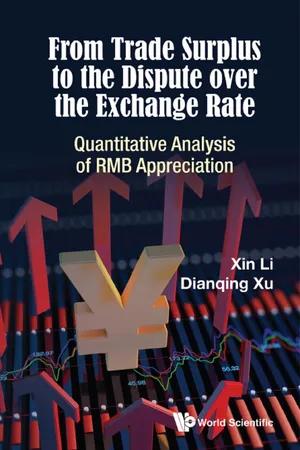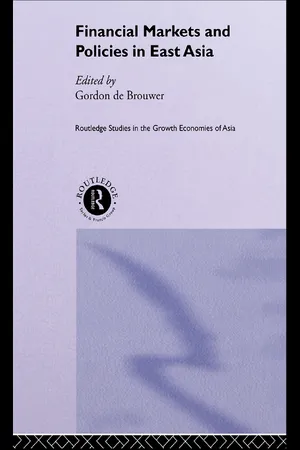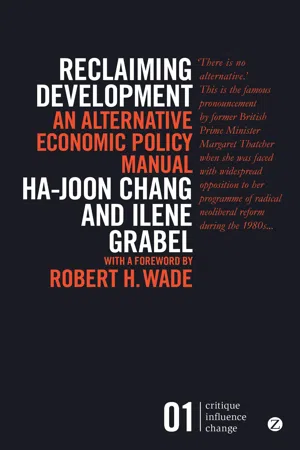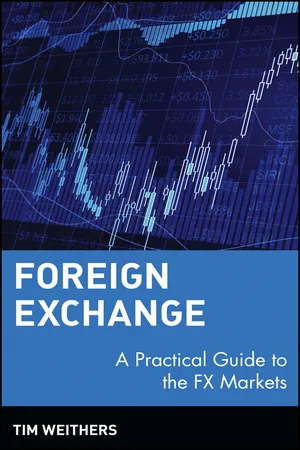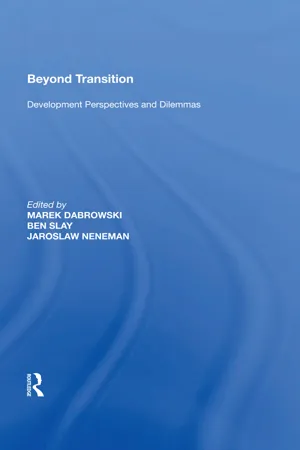Economics
Managed Float
Managed float is a type of exchange rate regime where the value of a country's currency is allowed to fluctuate in the foreign exchange market, but central banks or monetary authorities may intervene to influence the exchange rate. This system allows for some flexibility in the currency's value while still allowing for some degree of control by the government or central bank.
Written by Perlego with AI-assistance
Related key terms
8 Key excerpts on "Managed Float"
- eBook - ePub
International Finance
For Non-Financial Managers
- Dora Hancock(Author)
- 2018(Publication Date)
- Kogan Page(Publisher)
Like fixed rate systems, floating exchange rate systems come in a variety of forms. Broadly, a floating rate system depends on the market forces of supply and demand to determine the exchange rate. As economic conditions change, market participants will revise their current and expected future needs for currency and the exchange rate will change as a result. It will not generally be possible to predict these changes and so the exchange rate will fluctuate randomly.Clean float
A clean floating rate system depends entirely on market forces to determine the exchange rate or value of the currency. Governments do not have a target exchange rate and do not interfere in the markets to attempt to affect the exchange rates. Under a clean float system, rates may fluctuate significantly. The UK government operates a clean float and has done since 1992 when it left the Exchange Rate Mechanism.Dirty float or Managed Float
Under a Managed Floating system governments, via their central banks, intervene directly in the foreign exchange markets in order to influence the exchange rate. The evidence is that such activities are widespread. There are a number of reasons for government intervention in foreign exchange markets.Governments may simply wish to reduce the high levels of volatility often seen in a pure floating rate system. These high levels of volatility create uncertainty and can have an adverse impact on the economy and on international trade. A sudden appreciation might disrupt the export market and a sudden depreciation might increase the rate of inflation. A second reason is to address irrational or short-term fluctuations in exchange rates which might be difficult for those trading internationally and which will not have a long-term effect. In practice, it isn’t easy to distinguish between irrational fluctuations and a fundamental adjustment.Sometimes governments operate a floating rate system publicly but privately are committed to fixed value against another currency or basket of currencies. From 1987 until the UK joined the Exchange Rate Mechanism, the Chancellor of the Exchequer, Nigel Lawson, unofficially pegged the value of the pound against the German mark. This tended to lead to the pound being overvalued compared to the mark and also led to the pound entering the ERM at an unrealistically high rate. Exporting nations tend to be very wary of seeing their currency appreciate against their trading partners because of the impact on the competitiveness of their industries. - eBook - ePub
From Trade Surplus To The Dispute Over The Exchange Rate: Quantitative Analysis Of Rmb Appreciation
Quantitative Analysis of RMB Appreciation
- Xin Li, Dianqing Xu(Authors)
- 2016(Publication Date)
- WSPC(Publisher)
The people who criticize China for manipulating the exchange rate direct such criticism to the People’s Bank of China and accuse it of intervening in the exchange rate. These critics argue that the central bank should let the RMB float freely and appreciate significantly instead of intervene in the currency exchange. Such argument involves the choice of the exchange rate system.An exchange rate system free from the intervention of the central bank is called a floating exchange rate, and an exchange rate system allowed to fluctuate within a small range is called a fixed exchange rate. Under the floating exchange rate system, the exchange rate depends on the supply and demand of the foreign exchange market. The advantage of this system is that the government does not need to intervene or have many foreign exchange reserves. The disadvantage is that if the exchange rate significantly fluctuates, the value of the currency becomes very unstable. This instability is not conducive to international trade and foreign direct investment. If small economies adopt the floating exchange rate, financial speculation groups will take advantage of them. Even the IMF, which advocates currency liberalization, does not encourage developing countries to adopt the free floating exchange rate system.Under the fixed exchange rate system, the currency of a country is pegged to a basic currency. As the $ is the international basic currency, the exchange rates of many countries are pegged to the $. The supply and demand of various currencies in the foreign exchange market changes all the time. To realize a fixed exchange rate, the central bank has to play the important role of stabilization. When the home currency is in short supply in the foreign exchange market, the central bank provides the home currency and buys dollars; when dollars are in short supply in the foreign exchange market, the central bank provides dollars and buys the home currency. To achieve this situation, the central bank must have enough foreign exchange reserves. During the Asian financial crisis, international financial groups knew of the limited foreign exchange reserves of Thailand and Indonesia. Thus, they suddenly sold the home currencies and bought dollars until the central banks of these countries sold all the dollar reserves, leading to the collapse of the exchange rate system. - eBook - ePub
- Gordon De Brouwer(Author)
- 2003(Publication Date)
- Routledge(Publisher)
9: Fixed or floating: is it still possible to manage in the middle?
Reuven Glick
INTRODUCTION
The debate over the best choice of exchange rate arrangement, particularly for developing countries, has been given new life in the 1990s with the fast movement of capital around the world and the currency and balance of payments crises in emerging markets. Three prescriptions for developing countries are currently circulating.Those who blame exchange rate targets, specifically adjustable (‘soft’) pegs, as contributing factors for the crises in Mexico, East Asia, Russia and Brazil, advocate greater exchange rate flexibility (e.g., Obstfeld and Rogoff 1996; Ito et al. 1998; and Corsetti et al. 1998). In this view many Asian countries lost international competitiveness by continuing the de facto peg of their currencies to the US dollar when the dollar was appreciating between 1995 and 1997, particularly against the yen. Increased flexibility would have dampened the appreciation of their currencies, lessened the one-way bets of speculators, and limited the reversal of capital flows that contributed to the crisis in East Asia.A second view argues for reducing exchange rate flexibility by rigidly committing to permanently fixed (‘hard’) rates through institutional arrangements such as currency boards, currency unions or the full abandonment of the domestic currency. Advocates of this view (e.g., Hanke 1999) point out that none of the crisis currencies was formally pegged to the dollar when the crisis hit, while the currency boards of Hong Kong and Argentina successfully weathered the storm.A third view subsumes the first two and argues that ‘intermediate’ exchange rate regimes, such as adjustable single-currency and basket pegs, crawling pegs, target bands and even Managed Floats, are crisis prone and increasingly less feasible (e.g., Obstfeld and Rogoff 1996; Eichengreen 1999:104–5; Summers 2000; Eichengreen 2000; and Edwards 2000). Consequently, countries must choose between the two extremes of fully fixed or fully flexible exchange rate regimes. That is, countries must be totally committed to the goal of fixing their exchange rates, as Hong Kong and Argentina have been, or they must inevitably allow greater exchange rate flexibility. However, even among those who believe that the middle range along the spectrum of exchange rate regimes has vanished, there is no apparent consensus on which of the two polar regimes—fully floating or rigidly pegged—might be more appropriate; that is, which countries should adopt which extreme. - eBook - ePub
Reclaiming Development
An Alternative Economic Policy Manual
- Ha-Joon Chang, Ilene Grabel(Authors)
- 2014(Publication Date)
- Zed Books(Publisher)
Currency convertibility is essential for developing countries because foreign investors will be less willing to commit funds to a country if they face restrictions on their ability to convert any currencies earned through international trade and investment. Restricting currency convertibility gives rise to waste and corruption since individuals and firms will devote resources to evading convertibility restrictions (for example, by bribing the authorities to issue illegal foreign exchange licences).The neoliberal view of exchange rate regimes Floating exchange rate systems are the ideal to which all developing countries should strive.Floating rate systems are optimal because they give maximum play to market forces and thereby promote economic efficiency and discipline. In floating rate systems, the value of a country’s currency provides important information about the economy. A country with an appreciating currency is one that has gained the confidence of investors (as evidenced by their purchase of domestic assets). A country with a depreciating currency is one that investors hold in lower regard.Floating exchange rates also eliminate the potential for speculators to ‘bet’ that the government will be forced to change the rate or the range at which the currency is pegged. This type of speculation has often caused governments to devalue dramatically the rate at which their currency is pegged. In some cases, pegged exchange rate regimes have even collapsed under the weight of intense speculation against the currency.Floating exchange rates promote a greater degree of financial stability than do fixed or pegged exchange rates. This is because there is no reason for speculators to test the government’s commitment to maintaining a particular currency value.In some cases, extreme fixed exchange rate systems, such as currency boards, and even currency substitution are second-best alternatives to floating rates.Floating exchange rates are not always feasible. This may be the case if the economy is too fragile to withstand the currency fluctuations associated with floating rates, if domestic and foreign investors place a high value on currency stability and predictability because of previous experience with currency crises or high inflation, or if monetary authorities cannot be trusted to abstain from intervening in the currency market. In those circumstances where floating exchange rates are not viable, extremely rigid fixed exchange rate regimes such as a currency board or even full currency substitution may be necessary. - eBook - ePub
- Javier A. Reyes, W. Charles Sawyer(Authors)
- 2019(Publication Date)
- Routledge(Publisher)
The nominal exchange rate for most countries is now flexible. This frees the governments of the region from the need to constantly intervene in the foreign-exchange market to peg the exchange rate. On the other hand, the real exchange rate needs to be reasonably close to PPP to avoid inappropriate changes in trade flows. The fact that large, unexpected changes in exchange rates are much less common in the region than they were in the past indicates that the lessons of past policy mistakes have been learned and that current policies are an improvement. 15 This is important, as mismanagement of the exchange rate can have unfortunate consequences for the capital account, which is the focus of the next chapter. Box 9.6 Fear of floating In a classic article, Calvo and Reinert (2002) discuss the concept of “fear of floating.” This fear of floating exchange rates in emerging markets such as Latin America may be a rational response of central bankers to the situation they are in. In such markets, it is essential for the central bank to have credibility. This is particularly important in Latin America, as central-bank independence is relatively new in the region. In these cases, the central bank may find that it can stabilize either the exchange rate or the interest rate. In order to gain credibility, it is important to stabilize one or the other. Since it may be easier to stabilize the exchange rate, that may be a rational choice. This could lead to perverse pro-cyclical policies. For instance, a commodity boom might cause an unwelcome appreciation of the exchange rate. In response, the central bank might lower interest rates to reduce capital inflows and reduce the appreciation. In their paper, Calvo and Reinert found that countries use a combination of intervention, interest-rate policy, and exchange controls to limit changes in the exchange rate. Specifically, many countries that are commodity exporters have much lower exchange-rate volatility than one would expect - eBook - ePub
Foreign Exchange
A Practical Guide to the FX Markets
- Tim Weithers(Author)
- 2011(Publication Date)
- Wiley(Publisher)
Under a floating exchange rate regime, a sustained trade imbalance (e.g., USD out) will eventually result in a depreciating currency (USD weakens), the perception that imports are increasingly expensive, the view from abroad that your products are “cheap” (stimulating your exports), and a natural reversal of the trade flows. Much of the rationale for a floating exchange rate regime hinges on the belief that an unregulated global economy will serve to advance the interests of all countries collectively (even if it is not the case that every single individual benefits from that flexibility).Milton Friedman tells us that if foreign exchange rates are determined in a free market, they will settle at whatever level will clear that market. His classic treatise, “The Case for Flexible Exchange Rates,” produced in the early 1950s, in the middle of the Bretton Woods fixed exchange rate regime, was a spectacularly unorthodox defense of the power of competitive world markets.7 “What about the argument that we must defend the dollar, that we must keep it from falling in value in terms of other currencies—the Japanese yen, the German mark, or the Swiss franc? . . . The price of the dollar, if determined freely, serves the same function as all other prices. It transmits information and provides an incentive to act on that information because it affects the incomes that participants in the market receive.”8If, to a U.S. consumer, Japanese automobiles are attractive relative to the alternatives, then why should the U.S. government either induce (possibly via tariffs) that consumer to buy the more expensive U.S. product or spend the consumer’s tax Dollars to artificially maintain a strong Yen = weak Dollar? It may sound somewhat less dramatic today, but the Friedmans report that the U.S. government lost around USD 2,000,000,000 between 1973 and early 1979 defending the U.S. Dollar.IMPLICATIONS OF MONETARY POLICY
Economists have investigated, developed theories, and modelled the effects of monetary and fiscal policy under different exchange rate regimes. These studies have resulted in a number of theories involving the transference of monetary phenomena, the overshooting of inflation with changes in monetary policy (which can, obviously, have foreign exchange market implications) and an entire field known as open-economy macroeconomics. - eBook - ePub
- W. Charles Sawyer, Richard L. Sprinkle(Authors)
- 2020(Publication Date)
- Routledge(Publisher)
So why would a government buy or sell foreign exchange? Like individuals and companies, governments frequently need foreign exchange to conduct economic transactions. For example, if a government purchases land to build a new consulate in a foreign country, it needs foreign exchange to make the acquisition. When the government buys or sells foreign exchange to conduct economic transactions, its participation in the foreign exchange market really is no different from that of a large corporation. We have not assumed that a national government never deals in foreign exchange. Rather, we have assumed that the government has allowed the value of the equilibrium exchange rate to be determined by market forces. This situation is reasonably descriptive of the involvement of many governments in the foreign exchange market since the early 1970s. However, letting market forces determine the value of the equilibrium exchange rate (i.e., freely floating exchange rates) is not typical of all national governments. No exchange rate system is perfect. For reasons we will outline in the next chapter, governments may choose to fix the exchange rate at some predetermined level. The purpose of this chapter is to study how the overall economy and economic policy change when the exchange rate is not allowed to float freely.One of the reasons why we study fixed exchange rates is historical. Until the early 1970s, fixed exchange rates were the norm for all countries. For example, under a gold standard, each country’s domestic currency was defined in terms of the amount of gold it could buy. In addition, each country’s central bank was willing to buy or sell unlimited quantities of gold at the stated price. Since all currencies were defined in terms of gold, this maintained a fixed exchange rate between the various national currencies. In this case, fixed exchange rates were a natural part of a monetary policy based on gold. When the gold-standard monetary system broke up in the late 1920s, it was replaced by a system of fixed exchange rates known as the Bretton Woods system. Under Bretton Woods, most exchange rates were fixed from 1946 to the early 1970s. In order to understand the history of monetary systems, it is useful to have a basic understanding of how fixed exchange rate systems work. - eBook - ePub
Beyond Transition
Development Perspectives and Dilemmas
- Ben Slay(Author)
- 2017(Publication Date)
- Routledge(Publisher)
6Floating regimes reduce most of these costs of the fixed regimes. However, floating regimes also have their costs. First, they usually deliver higher inflation than fixed-rate regimes. Thus, an explicit nominal anchor, most likely in the form of an inflation target regime, must complement any flexible exchange rate regime. Second, flexible exchange rate regimes show more volatility in nominal and real exchange rates and sometimes lasting misalignments in the real exchange rate. This could be an important cost of flexible regimes, as volatility and misalignments have real costs in terms of reduced trade and capital flows and, ultimately, growth and welfare. How high volatility may rise is well illustrated by the exchange rate between the yen and the dollar, which went from 147 yen per dollar in August 1998 to 115 in October of that same year. If these sharp movements occur for the currencies of the two largest countries in the world, with deep markets to cover exchange rate risks, anything could happen for the currencies of smaller countries. The exchange rate volatility costs of a flexible exchange rate system in the form of balance-sheet effects could be important. Calvo (2000) has made this point forcefully while advocating a hard peg (currency board or dollarization). However, balance-sheet effects could be ameliorated through appropriate regulation and supervision of the financial system and the aggressive development of instruments and markets to cover exchange rate risks as well as the development of deeper capital markets in domestic currency (Caballero, 2002; Goldstein, 2002). Thus, a flexible exchange rate system must be accompanied by appropriate supervision and regulation of banks and by the promotion of instruments to hedge exchange rate risks, including encouraging issuance of local currency denominated debt.
Learn about this page
Index pages curate the most relevant extracts from our library of academic textbooks. They’ve been created using an in-house natural language model (NLM), each adding context and meaning to key research topics.

